Here's how the fake security alert reads:
(1) Firewall Alert:
YOUR COMPUTER MAY HAVE ADWARE / SPYWARE VIRUS
Call 855-972-3537 immediately for assistance on how to remove potential viruses. The call is toll-free.
Possible network damages if the viruses are not removed immediately: UNKNOWN
DATA EXPOSED TO RISK:
1. Your credit card details and banking information
2. Your e-mail passwords and other account passwords
3. Your Facebook, Skype, AIM, ICQ and other chat logs
4. Your private photos, family photos and other sensitive files
5. Your web cam could be access remotely by stalkers with a VPN virus
MORE ABOUT THE VIRUS:
Seeing these pop-ups means that you may have a virus installed on your computer which puts the security of your personal data at a serious risk.
It's strongly advised that you call the number above and get your computer inspected before you continue using your internet, especially for shopping.
As you can see, it's a typical tech support scam. Scammers want to convince you into downloading they bogus malware removal software. Bogus malware scanners usually find hundreds on viruses on your computer that of course don't exist in reality. So, don't download anything and don't pay for bogus tech support service unless you want to lose $200 or $300 just before the Black Friday. I'm pretty sure you don't want this.
Such fake pop-ups are usually displayed by bogus web browser extensions, adware and PUPs (Potentially Unwanted Programs). Potentially Unwanted Programs are a type of software program which you have accidently installed on your PC, laptop or tablet. Surely that's no mean feat – how on earth do you accidently install something you don't want on your own computer? Well that is due to the rather insidious way that PUP developers deliver their 'product'. The truth is that it doesn't matter what you're downloading; it could be something you've paid good money for such as an anti-virus program (the irony!), the latest version of a software upgrade, or some freeware such as a movie or album download, PUPs do not discriminate and whatever you're downloading, you could also be installing a hidden extra in conjunction with the program you do want.
All that you really need to be aware of though is that you need to pay closer attention when you're downloading programs, files or applications online. It really doesn't matter how well known, or expensive, the item you're downloading is, it may still be bundled with a PUP. As a result, you may later get 855-972-3537 scam pop-ups.
So how can you tell if the software or file you want is packaged with a Potentially Unwanted Program? The good news is that it is fairly easy – albeit slightly tedious! Basically you need to stop skipping through the End User License Agreement (EULA) that asks you to agree to a download and take more interest in what it is you're actually installing. Look for mentions of an 'added program' and ensure that check boxes are checked or unchecked in your favor.
If you have questions, leave a comment down below. I will be more than happy to help you. Good luck and be safe online!
Written by Michael Kaur, http://deletemalware.blogspot.com
855-972-3537 Tech Support Scam Removal Guide:
1. First of all, download anti-malware software and run a full system scan. It will detect and remove this infection from your computer. You may then follow the manual removal instructions below to remove the leftover traces of this malware. Hopefully you won't have to do that.2. Remove 855-972-3537 scam pop-up related programs from your computer using the Add/Remove Programs control panel (Windows XP) or Uninstall a program control panel (Windows 7 and Windows 8).
Go to the Start Menu. Select Control Panel → Add/Remove Programs.
If you are using Windows Vista or Windows 7, select Control Panel → Uninstall a Program.

If you are using Windows 8, simply drag your mouse pointer to the right edge of the screen, select Search from the list and search for "control panel".

Or you can right-click on a bottom left hot corner (formerly known as the Start button) and select Control panel from there.
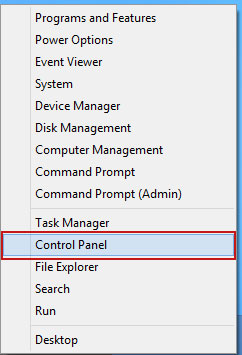
3. When the Add/Remove Programs or the Uninstall a Program screen is displayed, scroll through the list of currently installed programs and remove the following:
- Quiknowledge
- LyricsSay-1
- Websteroids
- BlocckkTheAds
- HD-Plus 3.5
- and any other recently installed application
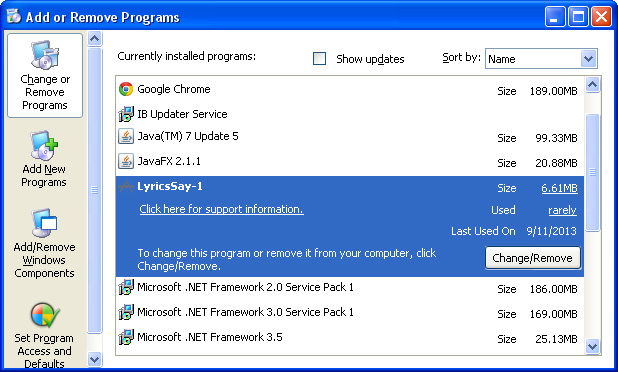
Simply select each application and click Remove. If you are using Windows Vista, Windows 7 or Windows 8, click Uninstall up near the top of that window. When you're done, please close the Control Panel screen.
Remove scam pop-ups from Google Chrome:
1. Click on Chrome menu button. Go to Tools → Extensions.
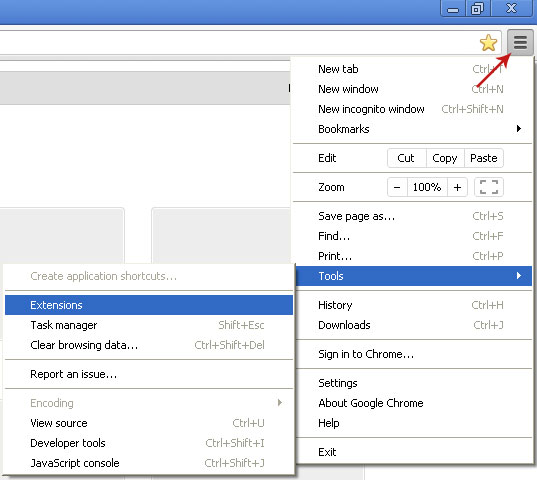
2. Click on the trashcan icon to remove BlocckkTheAds, LyricsSay-1, Websteroids, Quiknowledge, HD-Plus 3.5 and other extensions that you do not recognize.
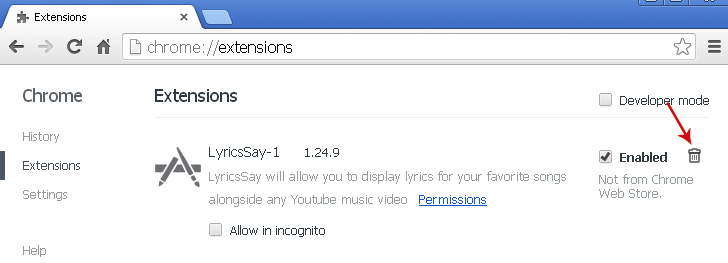
If the removal option is grayed out then read how to remove extensions installed by enterprise policy.

Remove scam pop-ups from Google Chrome:
1. Open Mozilla Firefox. Go to Tools → Add-ons.

2. Select Extensions. Click Remove button to remove BlocckkTheAds, LyricsSay-1, Websteroids, Quiknowledge, HD-Plus 3.5 and other extensions that you do not recognize.
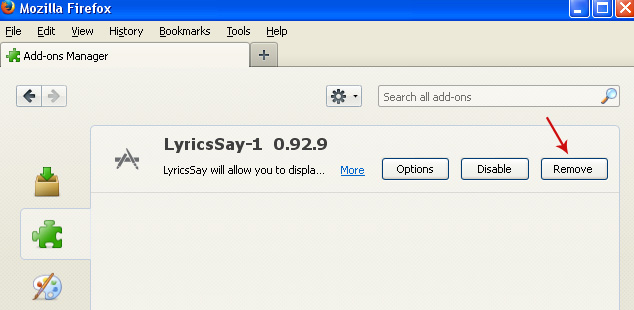
Remove scam pop-ups from Internet Explorer:
1. Open Internet Explorer. Go to Tools → Manage Add-ons. If you have the latest version, simply click on the Settings button.

2. Select Toolbars and Extensions. Click Remove/Disable button to remove the browser add-ons listed above.


Không có nhận xét nào:
Đăng nhận xét